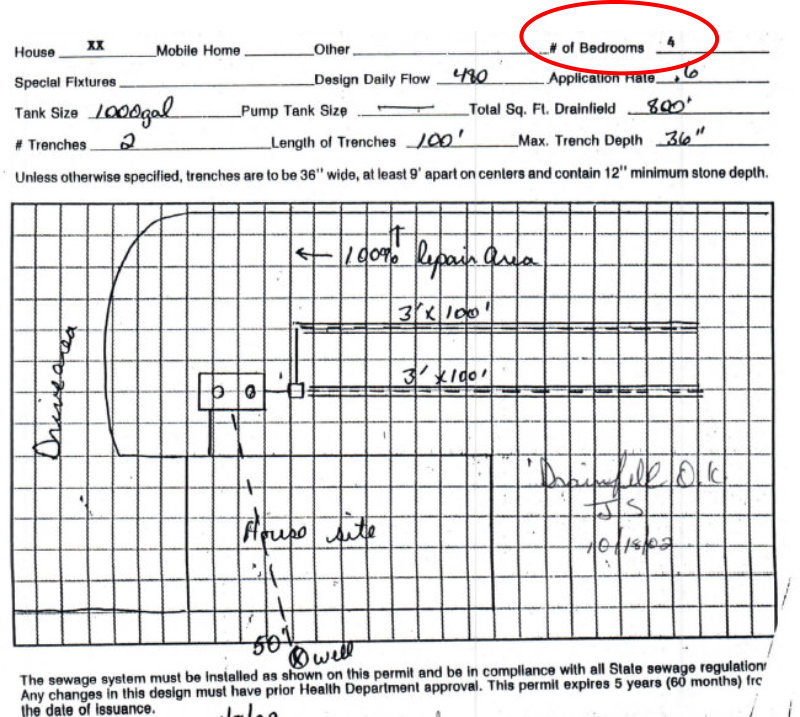
Our Prepper Property Search – Part 2
We’ve spent two years looking for that perfect prepper property across multiple states. We want our new home to be our retreat as well as our full-time home. It need storage space and room to garden and raise small livestock. It needs to be far from the city, private, defensible and have surface water available.
We haven’t landed the perfect spot yet, but we’ve made some offers and come close. We’ve also learned a great deal.
Here are the top ten tips we’ve learned for buying prepper properties:
Tip 1: You Don’t Want it too Steep
Mountains are great, but too many of the homes we saw were literally clinging to the side of a mountain. In other words, there is not much room to garden. We did see two nicely terraced gardens, which gives us an idea of what is required to garden on the side of steep hill, but in our experience they are rare.
Having five acres that are flat or gently rolling is probably better than having 20 acres that are so steep you’d need to raise mountain goats.
Tip 2: Farms are Promising but Expensive
There are many small farms in valleys that look promising. Generally, the road goes down the valley and a creek or small river runs alongside of it. Farm property usually has bottom land where farmers raise hay or pasture livestock. As the side of the valley turns up, you’ll see more grazing land and sometimes orchards. Further up the mountain, once it gets steep, it’s often just woods.
Something like that would be ideal for a prepper seeking self-sufficiency, but you generally have to buy a good-size chunk of land and productive farm land can be expensive. Plus do you want to be a prepper or a farmer? We don’t plan on having a haying operation, but if we find something like this in our price range, we might be able to make some money by letting someone else run a haying operation on it.
Tip 3: You Don’t Want a Vacation Home
Many of the homes we’ve visited are second homes and are set up for vacationing, not for permanent residency. What’s the problem with that? Vacation homes have lots of bedrooms and at least one will be packed with bunk beds so that multiple families with kids can vacation together. It also means less closet space because on vacation you tend to live out of your suitcase and you don’t have to worry about storing out-of-season clothing.
Vacation homes also put an emphasis on a great view, which is nice, but not critical to us. And they are near activities like ski resorts, zip lines and tubing, which aren’t important to preppers. We’d rather be near a farm store.
If the economy crashes as a result of the coronavirus, you may see a wave of second homes hit the market. That might allow you to snap one up at a good price, but just make sure you can reconfigure it to meet the needs of your retreat or full-time residence.
Tip 4: Avoid an HOA
When we first started out, we saw four properties in developments with home owner associations and what the listing agent said were “light covenants.” That’s a matter of opinion. For example, at one place we were told we could have up to two horses but no chickens, which is the opposite of what we want. At another, we were told locals would be alarmed by too much gun fire (which means no shooting range even though the property was 20 acres) while another frowned on the use of four-wheelers due to the noise. (Most HOA documents have a clause that lets them prohibit any activity that causes too much noise.) All non-starters.
We ran across one home that we liked the looks of, but after we saw the convents, it wasn’t even worth seeing in person. They were in a conservation easement that was so tight you could not put up an outbuilding or cut the limb off a tree. Ridiculous!
All the developments had the good, wide, well designed and maintained roads and all but one had buried utilities. Nice properties, but not prepper properties. Gated community that cater to rich retirees from Atlanta, Washington DC, or some other large city are even worse. We quickly learned not to waste our time looking at anything with an HOA or restrictive covenants.
Tip 5: Beware of Owner-Built Homes
We saw two homes that looked good on the computer, but once we showed up in person many little things were incomplete or looked unfinished. In both cases, the homeowner built the house themselves. We figure they probably hurried through the work to get the occupancy permit and intended to go back and finish the job later, but that never happened.

What types of things did we see? A chimney that was encased in stone on the lower level but was just unfinished plywood above the roof, electrical wires sticking out of the wall where light fixtures should go, built-in speakers that had no wire running from them, tiny builder-grade vanities in large bathrooms, tile work that was never completed, closets without doors, mismatched interior doors, and one building where you had to leave the house and run down the hill to get into the basement because there were no interior steps.
Tip 6: Assume the Online Listings Lie
We’ve seen listings designed to mislead and disclosures that are just plain inaccurate. We measured one house because it was advertised as 2,300 square feet and found it was actually just over 1,800. Sometimes, listings will say four bedrooms when the septic is only approved for three. Occasionally, the photos will be old, showing a house right after it was renovated several years earlier. You can often spot this by looking at the trees and shrubs in person, which may be larger than they are in the photos.
Listings also lie by omission; if they don’t show you the shower in the online photos, there’s a reason for it – it’s tiny, old, stained, marred by bad tile work, etc. If the listing emphasizes the view and the local wildlife, there’s a problem on the inside of the house. Don’t even bother seeing a house without many interior photos unless you want a fixer-upper.
Tip 7: Do your Due Diligence
We learned to pull septic permits, well reports, building permits, tax records, deeds, and other public documents for any property that we were serious about. In one case, the deed showed that a neighbor had sued the land owner for locking their gate, claiming he had an easement to use the road through their property. That’s important to know — especially if you might want to lock the gate.

It’s also important to look at the survey, walk the land and make sure everything you think you are buying is actually within the property lines. We saw one house where the barn just below the house feet away was actually on a piece of property owned by someone else.
They say real estate is about three things: Location, location, location. As a buyer, I’d say it’s about: Buyer beware, due diligence, and do your homework.
Tip 8: Listing Times Tell a Story
If a property has not sold for 200 days or more, there’s usually a good reason no one bought it. Generally, it’s overpriced. Sometimes there’s a big flaw that you can’t see online but is obvious when you get there.
We saw a property in Idaho that had a view of the river. It wasn’t until we walked out onto the deck that we realized the view included a hydroelectric dam on the river, complete with large lights that would light it up at night.
The first house we made an offer on had some flaws and had been on the market 300 days. We offered 30 percent less than the listing price. They turned us down with no counter offer. That was seven months ago and the house still hasn’t sold. It is owned by an out-of-state owner who doesn’t know property values 200 miles away.
Some owners don’t realize that houses don’t always sell for what they cost to build. Maybe the owner splurged on cypress siding or tile from Italy, but that’s not a cost the appraiser is going to fully recognize. Sellers become emotionally attached to their house and don’t want to sell it at what is fair market value. As a result, these houses can stay on the market for years, often unoccupied, filling up with dead stink bugs, dust and a stale smell because the owner lives out of state and can’t be bothered to stop by and spruce things up. They won’t sell for less because its a blow to their pride.
Tip 9: Pay for the Inspection
Buyers often spend 30 minutes or less in a house before they make an offer. That may be enough time to see that you like it, but it isn’t enough time to know that the house doesn’t have hidden flaws, such as a foundation that’s settling, an HVAC with a cracked heat exchanger, a hot water heater that is on its last legs, or squirrels in the attic. It’s the inspector’s job to look into all the mechanical and physical aspects of the house and make sure you (and the mortgage company) are not investing your hard-earned money in a house that will fall apart or lose value due to an unseen problem.
I also recommend that you go on-site when the inspector is doing their inspection, even if the house is in another state. Having the inspector show you the flaw is far better than seeing it in a photo on his report. For example, a crack in the garage floor might look huge in their report, but seeing it in person might reassure you that it’s nothing serious.
Tip 10: Be Willing to Compromise.
We’d love to find a house with the great room and kitchen of house X, the master bedroom suite of house Y, and the land and outbuildings that went with house Z, but that’s never going to happen. Obviously, compromise is required, unless you buy raw land and build it yourself with an unlimited budget.
For example, I’ll compromise and make an offer to buy a house with a gas log fireplace because I know during the inspection period, I’ll have a professional tell me if the chimney can be used by a wood burner. My wife will compromise and get an electric cooktop. I’ll compromise and be closer to a state highway than I like, as long as the house is at least two roads away and out of sight. My wife will compromise and put the garden further from the house than she wants, as long as we get a Gator or similar vehicle.
Don’t let good enough be the enemy of perfect.
And when it comes time to bargain with the seller, don’t be afraid to compromise a bit there as well.
All the parts of our Prepper Property Search are available in chronological order.







